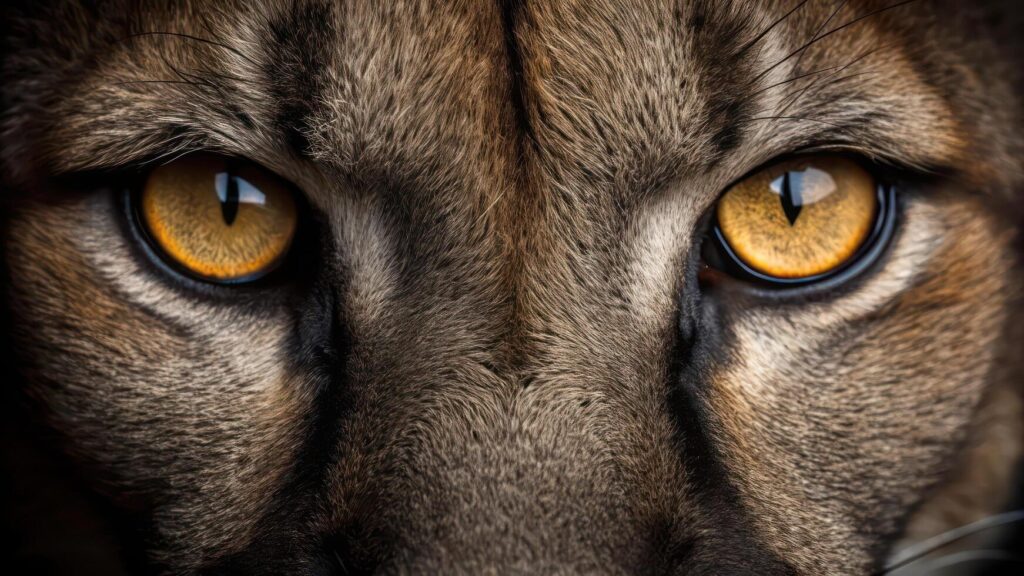Post Category : Archaeonerdism Field Life Glossary Heritage Management Special Finds
Top sites of 2022, BC edition
Field operations in British columbia
2022 marked Ember Archaeology’s first year of significant field operations in British Columbia. Our BC crews conducted a number of sizable wildfire-related projects for the BC Ministry of Forests over the course of the season, ultimately surveying hundreds of kilometers of constructed fireguards and fuel reduction developments. These were nearly all post-impact developments, and so the crews had alot of exposed surface areas to survey for artifacts. In all, Ember’s Interior Plateau Archaeologists recorded 40 new archaeological sites in BC for 2022. Here are our picks for the 10 sites of 2022, BC edition!
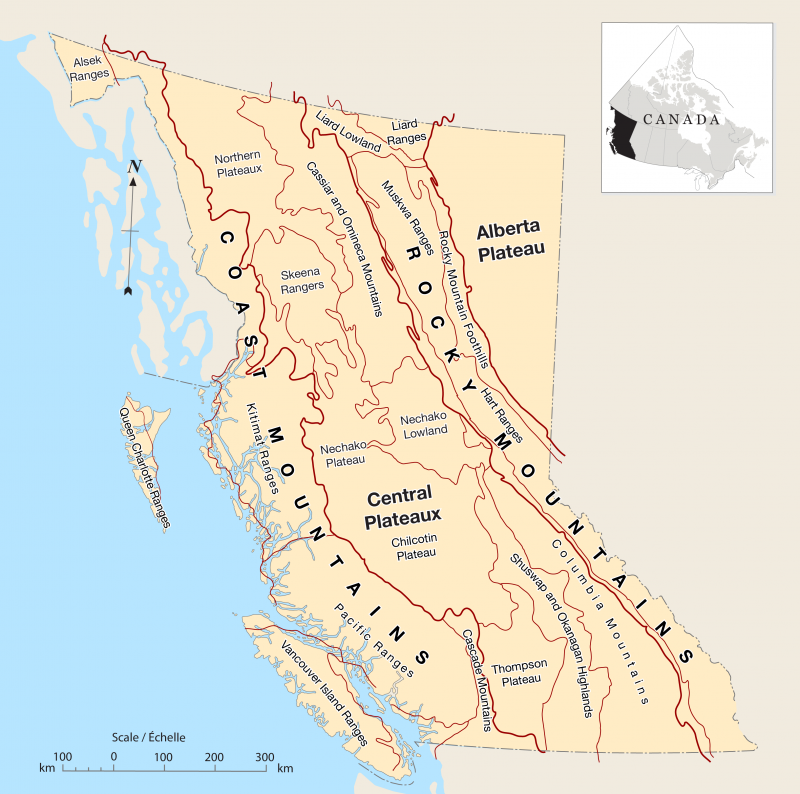
EhRi-15, 70 mile house
EhRi-15: This site was found while assessing a constructed fireguard south of 70 Mile House, BC. The site is located on a low rise on the north side of a small pond. Archaeological materials identified at this site include a small scatter of debitage made of dacite (a type of volcanic stone widely used for stone tools in this part of BC), and two complete dacite bifaces that may represent spear or dart points. Ember conducted a pXRF analysis on the lanceolate bifaces collected from this site, and determined that the most likely source for the raw stone are the Arrowstone Hills area near Cache Creek, BC.
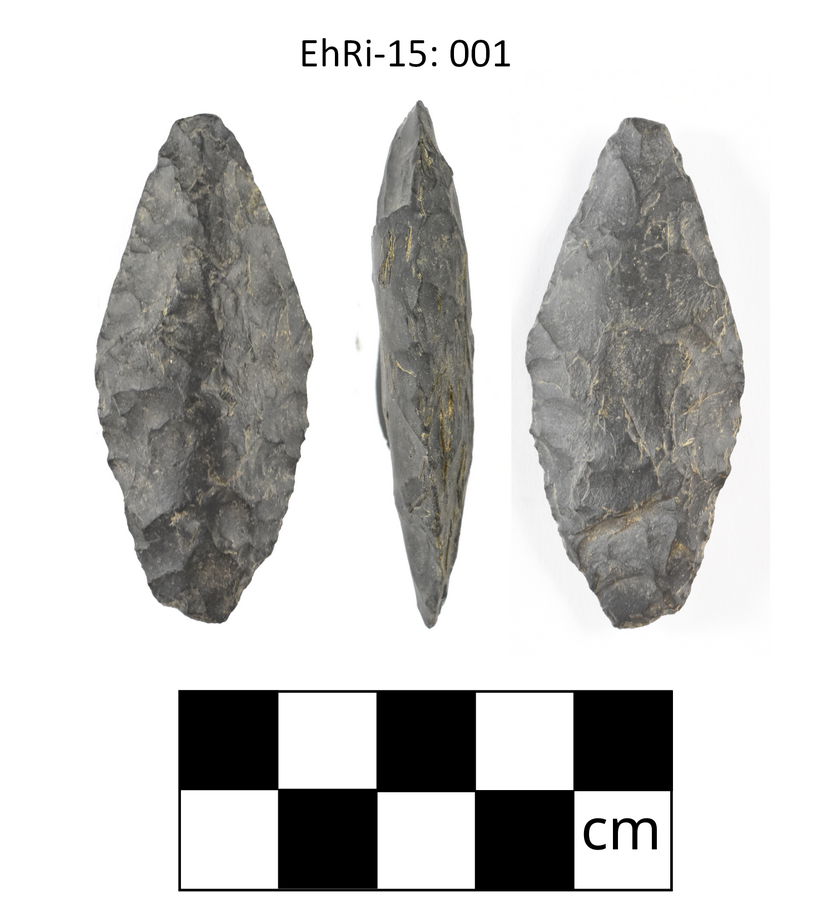

EiRo-15, Churn Creek
EiRo-15: This site was found while assessing a constructed fireguard southwest of the Churn Creek Protected Area on the Chilcotin Plateau. The site is situated on an elevated, broad bench overlooking the south side of a lake. A large density of lithic materials are identified at this site, including more than 200 flakes and a large assortment of tools like scrapers and bifaces. Best of all, a total of eleven projectile points are identified! Nearly all of which are from an archaeological culture referred to as the Lehman Phase, which has been dated to approximately 6000-4500 years before present (yBP). Most of the materials are manufactured from dacite, but four chalcedony flakes are also observed. A pXRF analysis indicated that the most likely source for the raw stone is from the Maiden Creek area near Cache Creek.
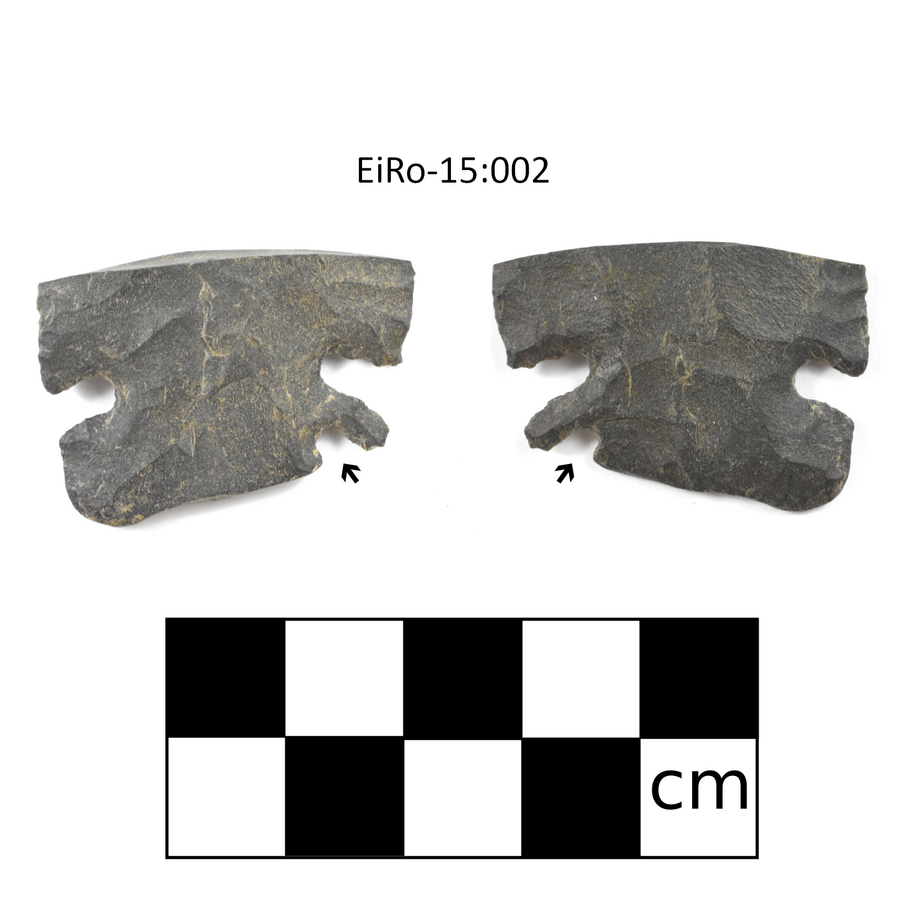

Ejri-4, 100 mile house
EjRi-4: This site was found while assessing a constructed log-deck west of 100 Mile House, BC. The site is located on a gently sloping bench near the margins of a creek. The site includes a small lithic scatter of dacite and chalcedony flakes, a chalcedony core, a dacite biface, and another Lehman phase projectile point base. A pXRF analysis on the tools indicate that the most likely source for the raw stone is also from the Maiden Creek or Arrowstone Hills.
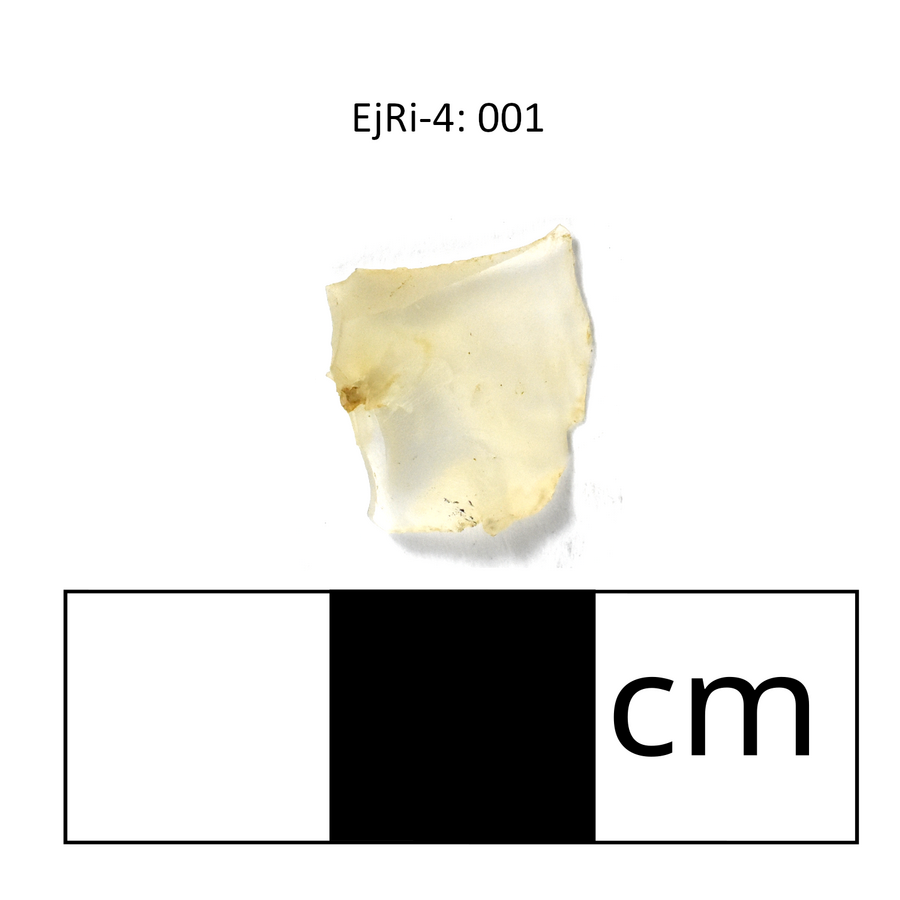
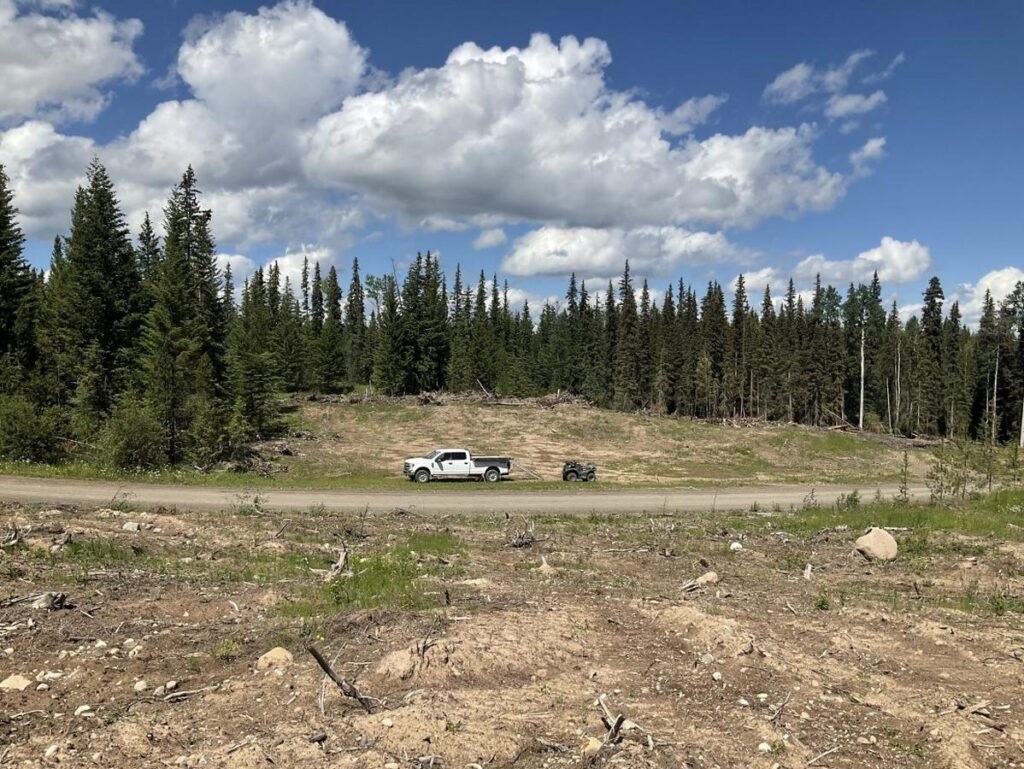
EjRk-16, 100 mile house
EjRk-16: This site was found while assessing a constructed fireguard southwest of 100 Mile House. The site is located on the north shore of a large lake. Located mostly along an access trail along the lake shore, the site was found immediately after we parked our work truck (thanks to a biface lying right on the trail surface)! In addition to the tool, a handful of dacite flakes were found at the site as well. A pXRF analysis on the biface indicated that the most likely source for the raw stone is from the Maiden Creek or Arrowstone Hills.
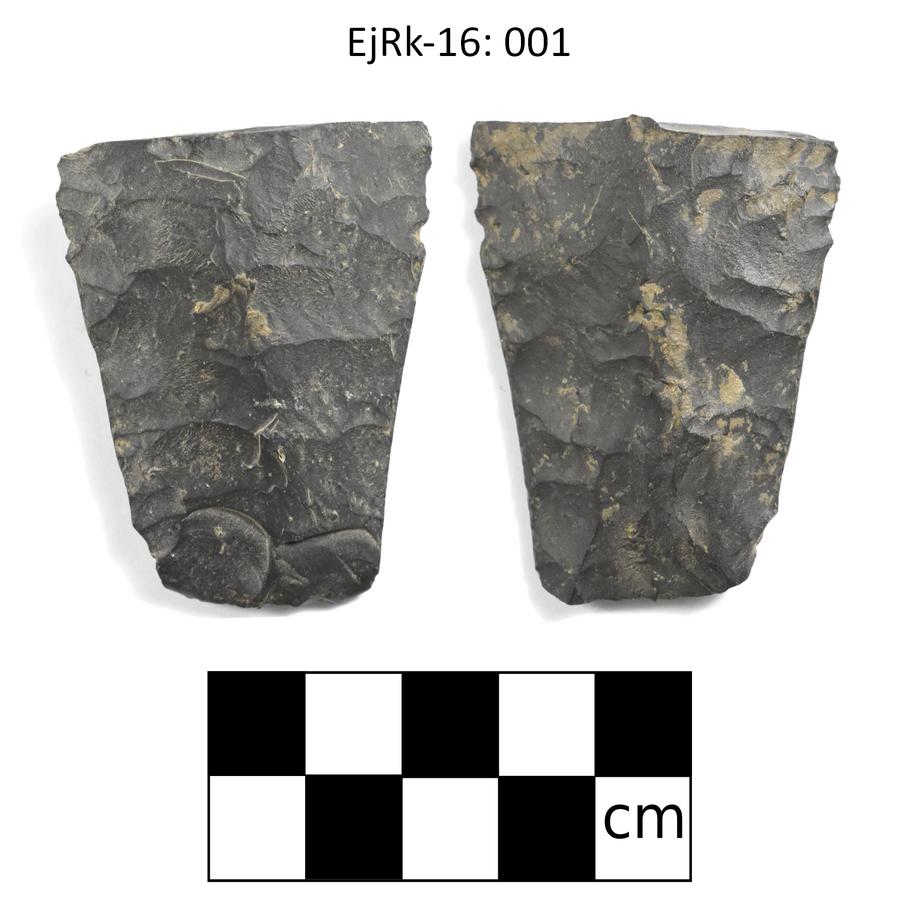

EjRk-20, 100 mile house
EjRk-20: This site was found while assessing a fireguard control line west of 100 Mile House. The site is located on an elevated terrace above a large creek, on an exposed ATV trail that runs the entire length of the landform. A sizable lithic scatter was identified, with more than 50 dacite flakes scattered along the trail, in addition to a single dacite biface. As is typical for this area, the dacite for the biface was sourced to either the Arrowstone Hills or Maiden Creek areas.
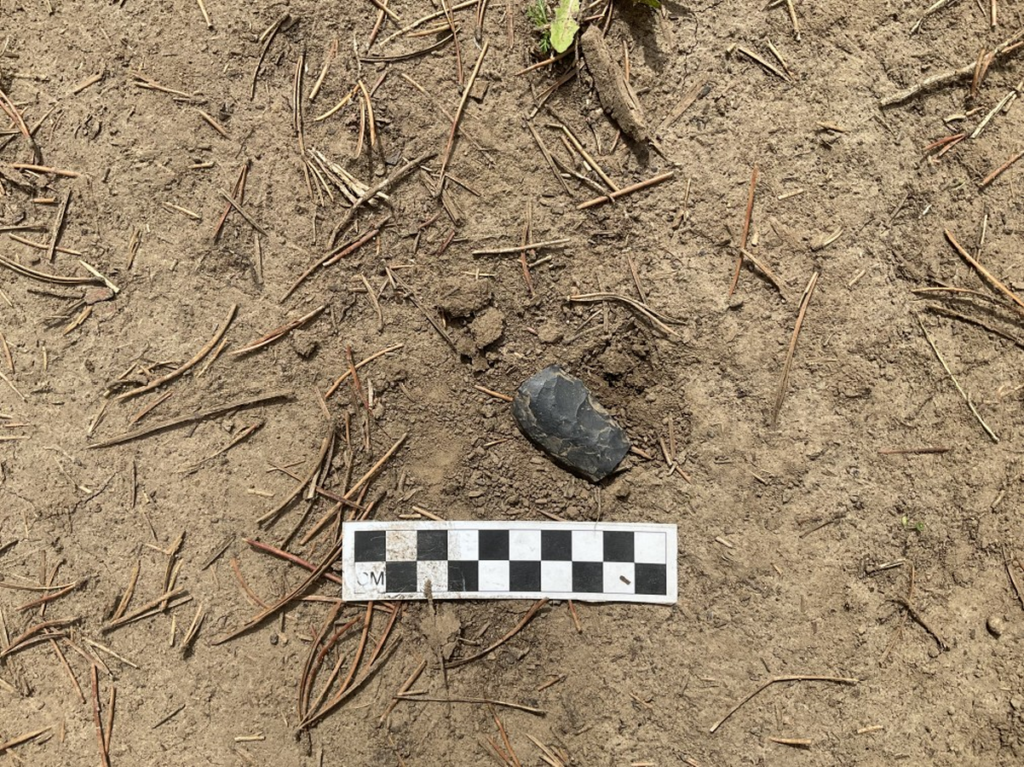
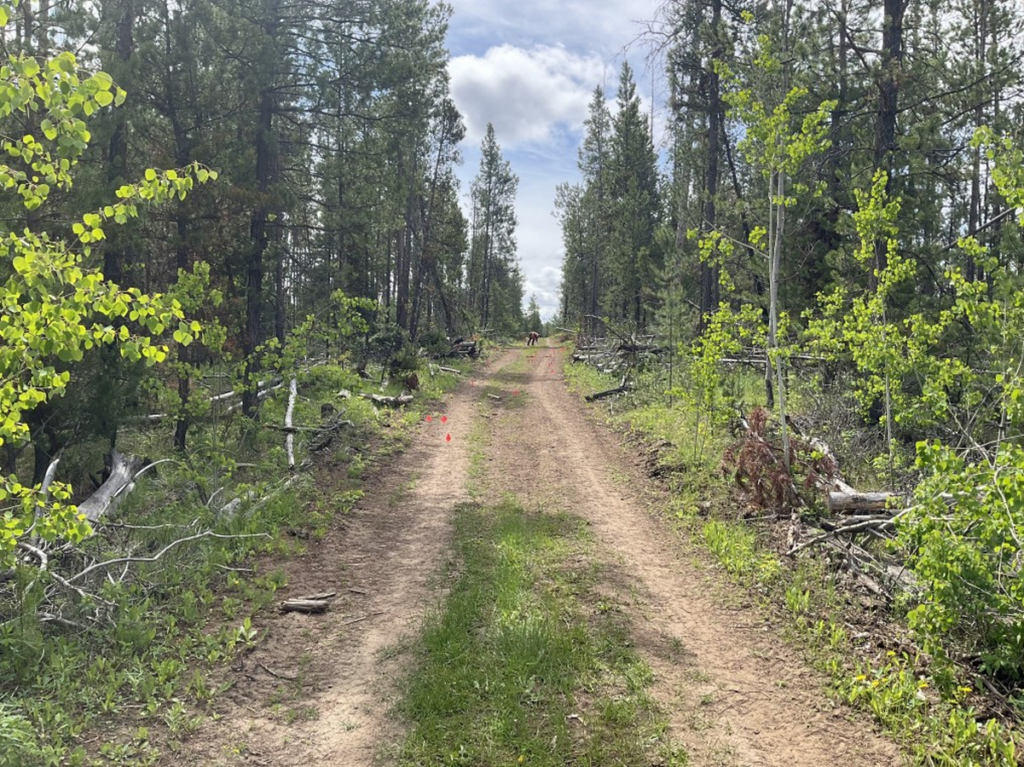
EkRf-20, Drewry Lake
EkRf-20: This site was found while assessing a fireguard and log-deck northeast of 100 Mile House. The site is located on an upper terrace looking south over Drewry Lake. Unfortunately, only one artifact was identified… but it’s a nice one! A dacite projectile point, identified as an Early Nesikep Tradition style that dates from 7500 to 6000 yBP. The stone used to make the point was sourced to the Arrowstone Hills area.
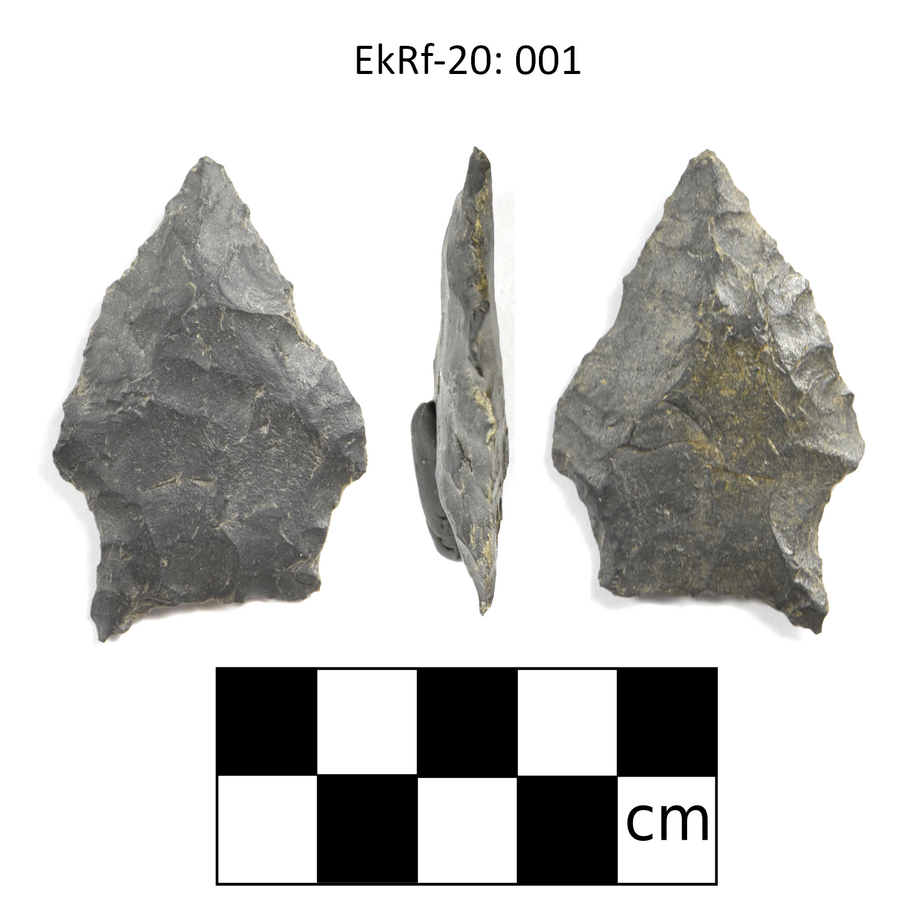
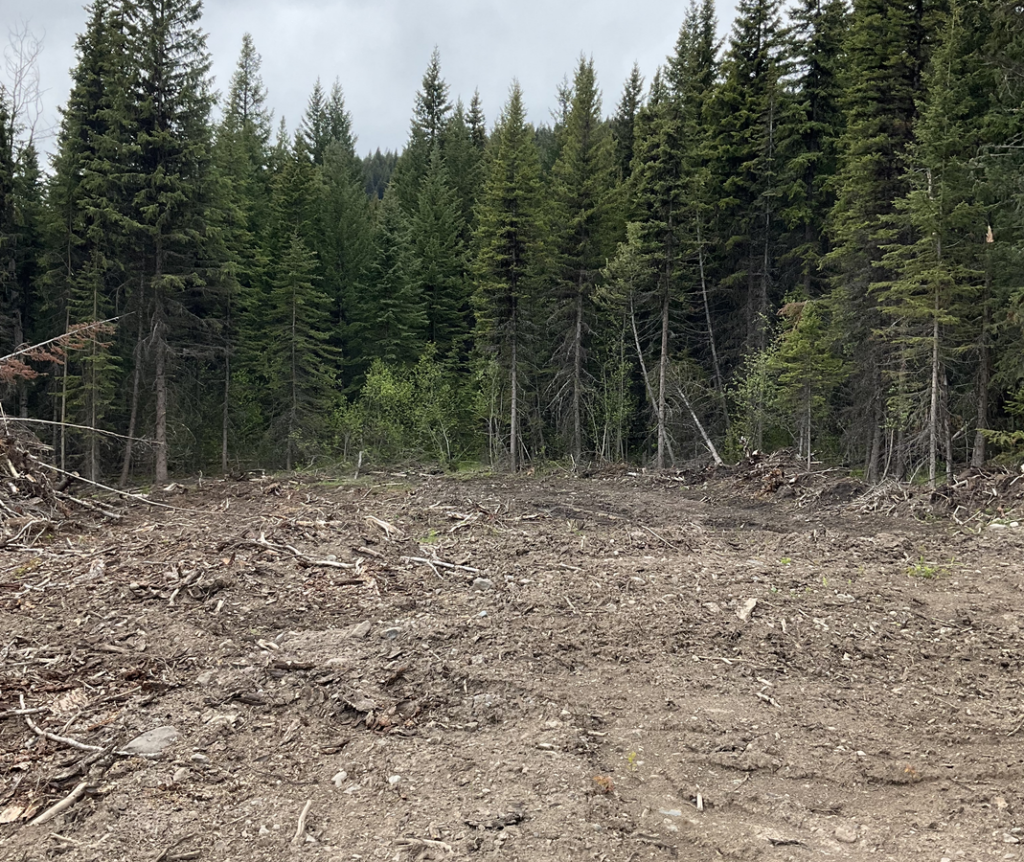
Fasf-5, kleena kleene
FaSf-5: This site was found while assessing a constructed fireguard and log-deck northwest of Kleena Kleene, BC. The site is located on the north shore of a small lake. There was a mix of artifact types identified at this site, both obsidian and dacite flakes and a dacite scraper. Sourcing the stone used has produced some interesting results: the obsidian comes from Anahim Peak (about 90 km northwest), while the dacite used to make the scraper likely comes from the Baezaeko River area near Nazko, BC (100 km to the northeast).

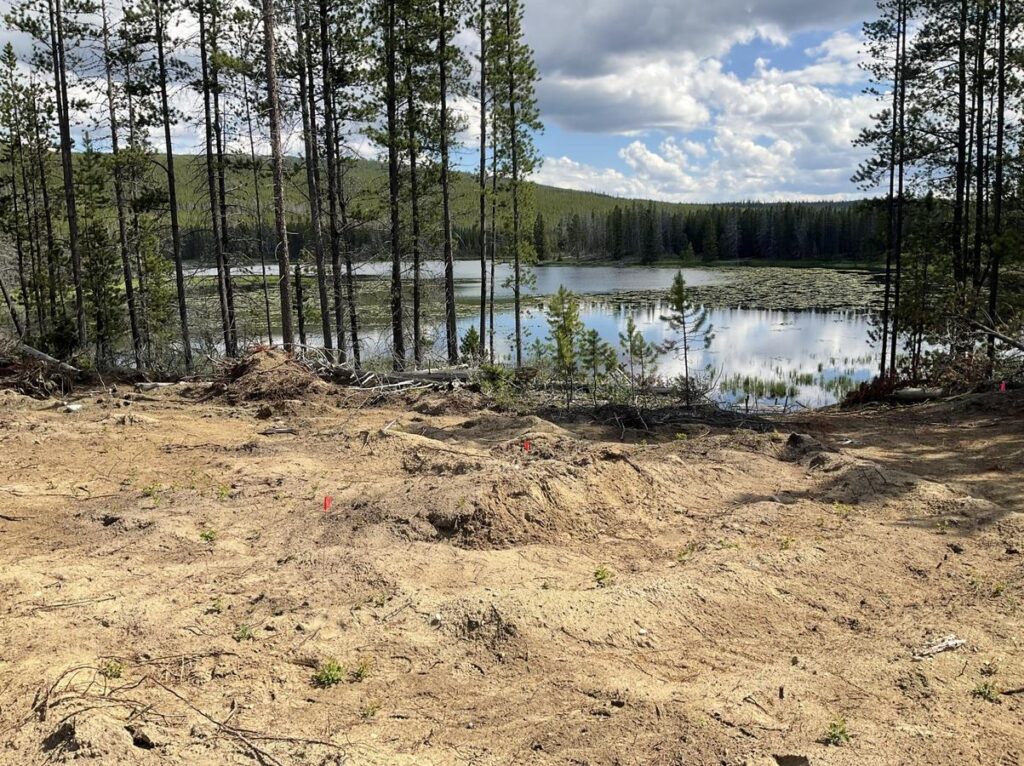
FcSj-6, Anahim lake
FcSj-6: This site was found while assessing a constructed fireguard and log-deck to the west of Anahim Lake, BC. The site is located on a bench along a seasonal drainage channel on the valley slopes above Hotnarko Lake. This site is a sizable scatter of obsidian debitage; over 100 flakes both large and small. This indicates that the site was used to reduce raw cobbles of stone to more manageable pieces for the creation of tools. Testing of some of the pieces from this site indicates the source of the obsidian is Anahim Peak, about 30 km to the north.
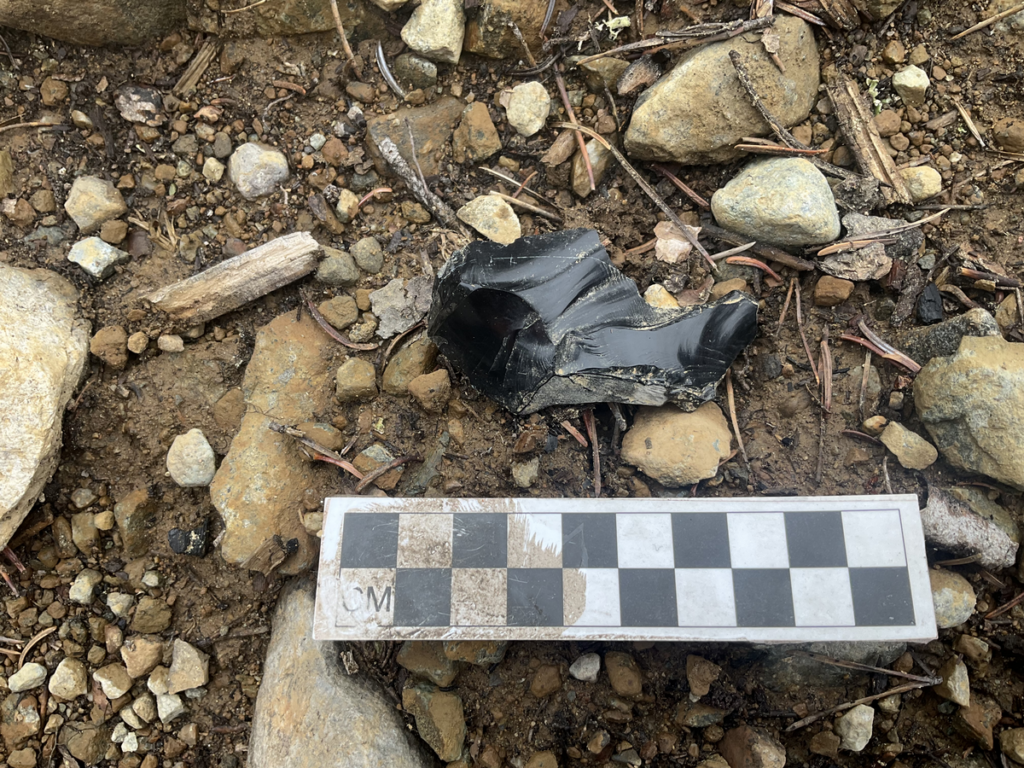
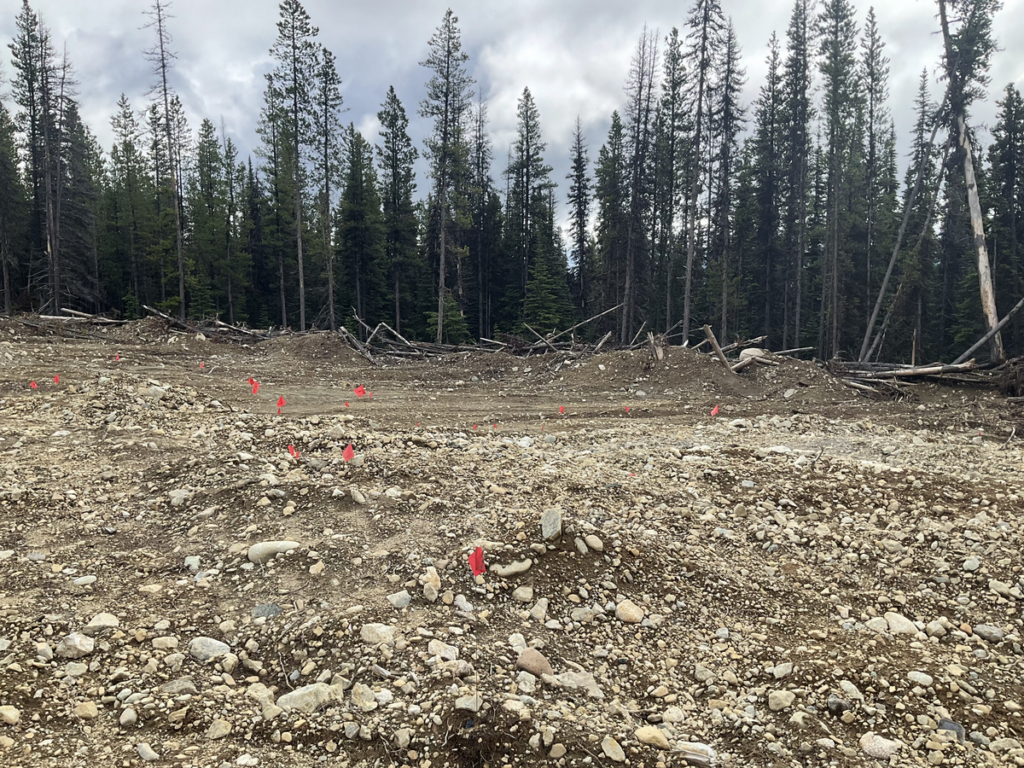
ffsj-15, eliguk lake
FfSj-15: This site was found while assessing a constructed fireguard near Eliguk Lake, north of Anahim Lake. The site is located on a low rise next to a stream outlet from a wetland. The site is a small scatter of dacite debitage and a single dacite projectile point. The point was identified as an Athapaskan side-notched point style that dates from roughly 3500-100 yBP. Surprisingly, considering that the Baezaeko River area and Anahim Peak are closer sources, the dacite used to make the projectile point was sourced to the Arrowstone Hills, almost 400 km away!
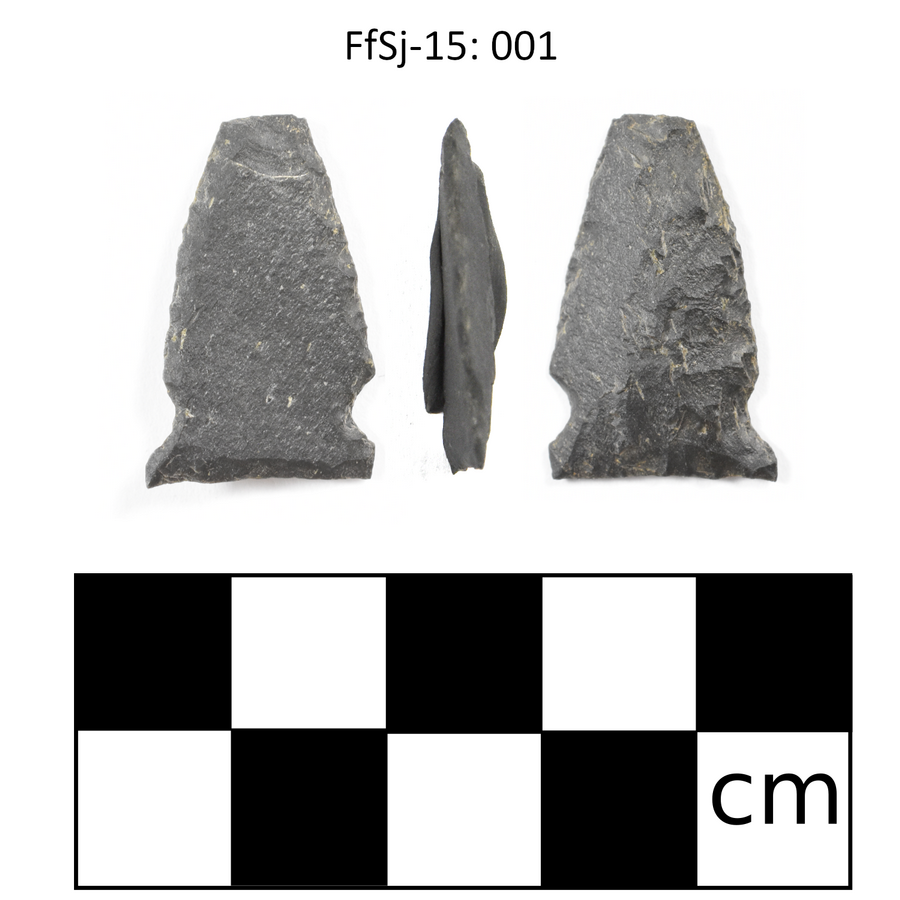
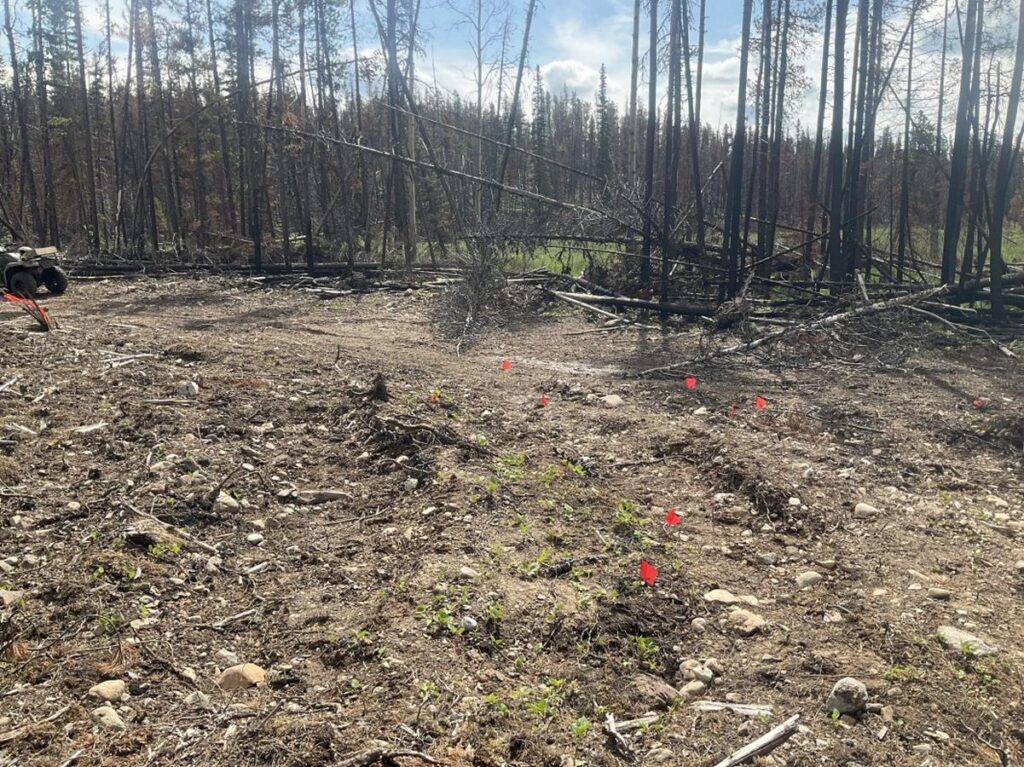
fhrw-83, quesnel
FhRw-83: This site was found while assessing a wildfire risk reduction treatment unit northwest of Quesnel, BC. The site is located on a terrace above the Euchiniko River. A small lithic scatter was identified along an ATV trail that runs along the terrace edge. A total of 14 dacite flakes were identified. This was the largest of four sites found along that particular ATV trail, spread out across 750 m of the terrace crest. This hints to the possibility of a complex of larger sites being located on the landform, still buried beneath the surface!
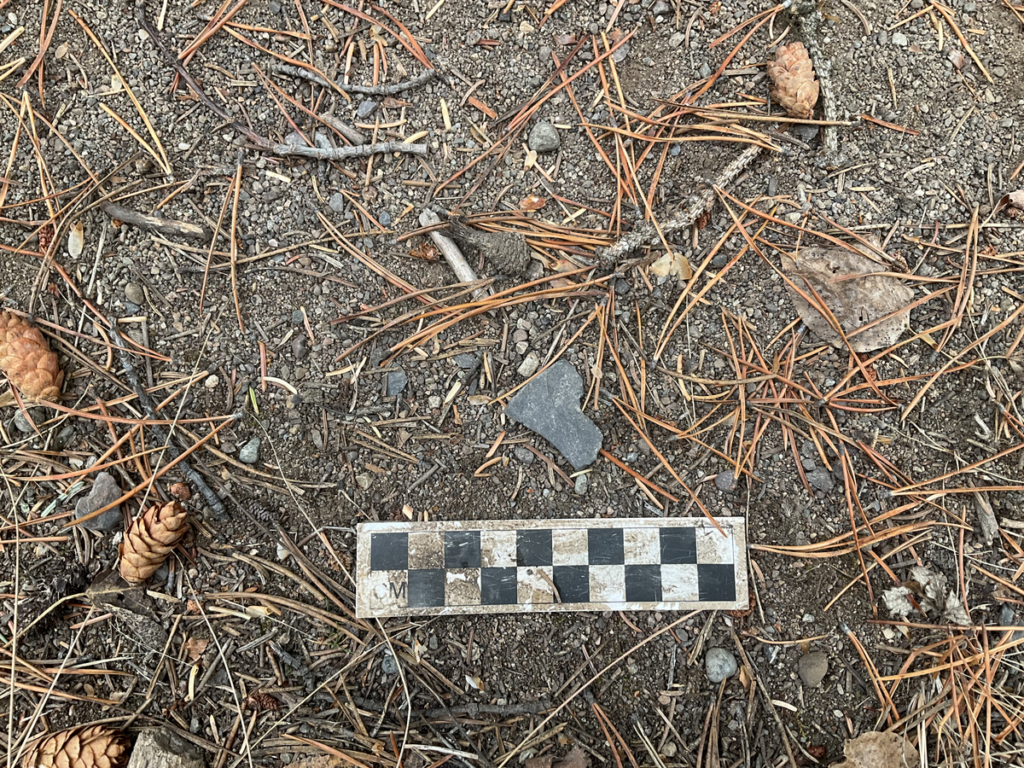
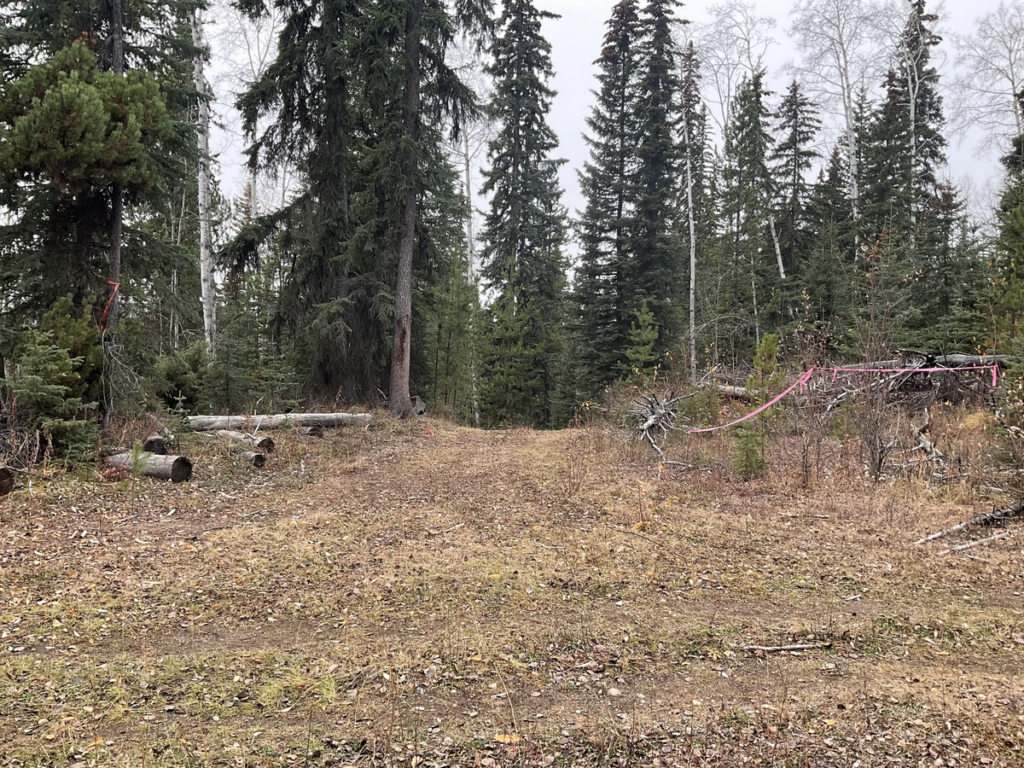
Final thoughts
Ember Archaeology’s field operations throughout the Interior Plateau of British Columbia resulted in a wide data set of lithic debitage and tools, cultures and complexes, raw material sources, and the advantages/disadvantages of wildfire reduction techniques.
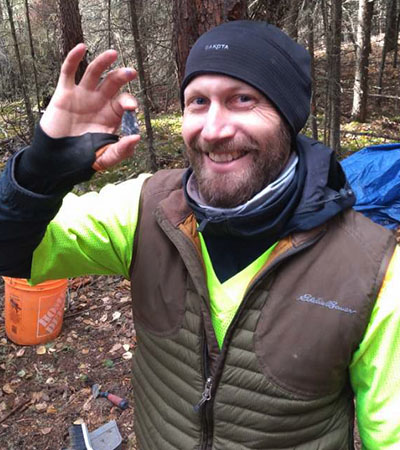
Braedy Chapman
Project Archaeologist
Braedy Chapman is Ember’s Project Archaeologist for Interior BC, and also supports our Alberta forestry operations. He is also our primary contact for BC First Nations and a member of our Indigenous Engagement Committee. Braedy has Permit Holding Status for the Interior Plateau region of British Columbia, and has held permits ranging from small commercial subdivisions to mid-sized forest harvest plans. He joined Tree Time Services Inc. (Ember Archaeology) in April of 2020, bringing 11 years of professional CRM experience to the company, including extensive work experience in the Interior Plateau of BC, as well as the Boreal and Plains regions of Alberta.

